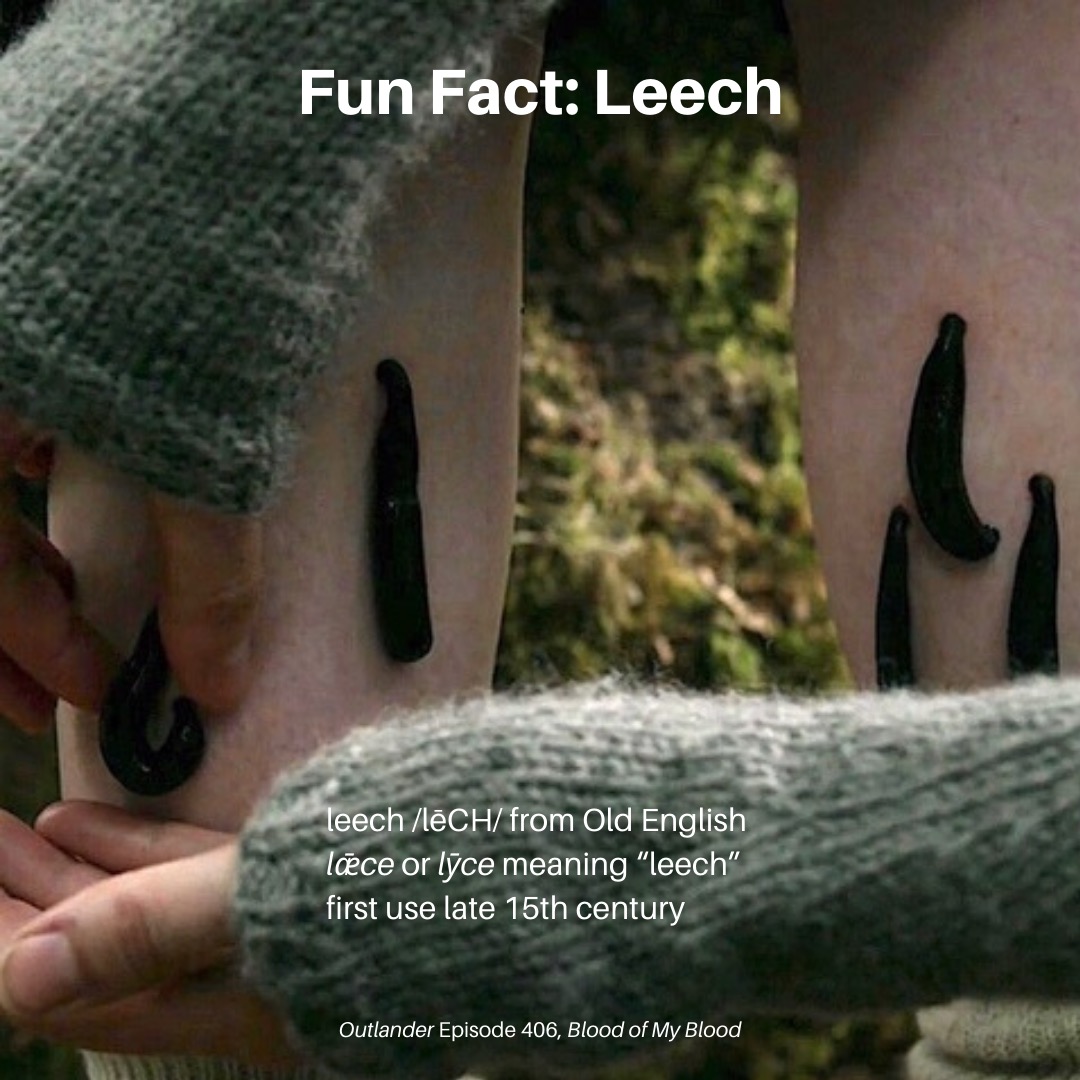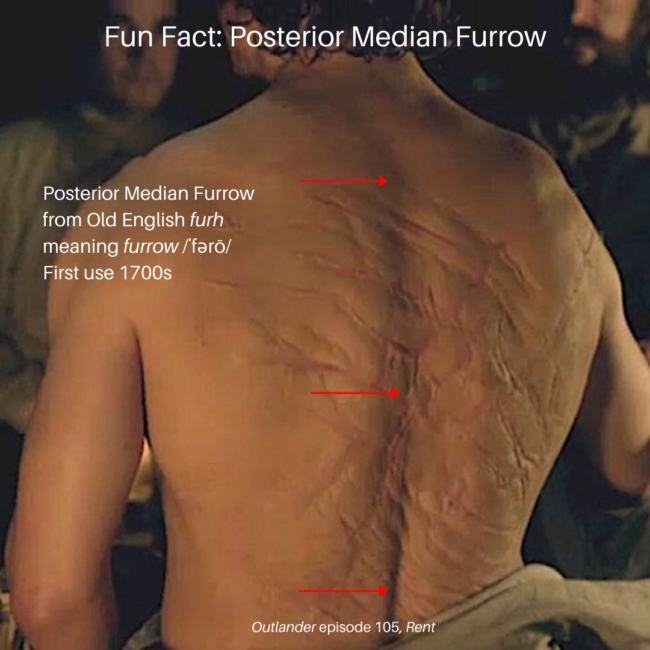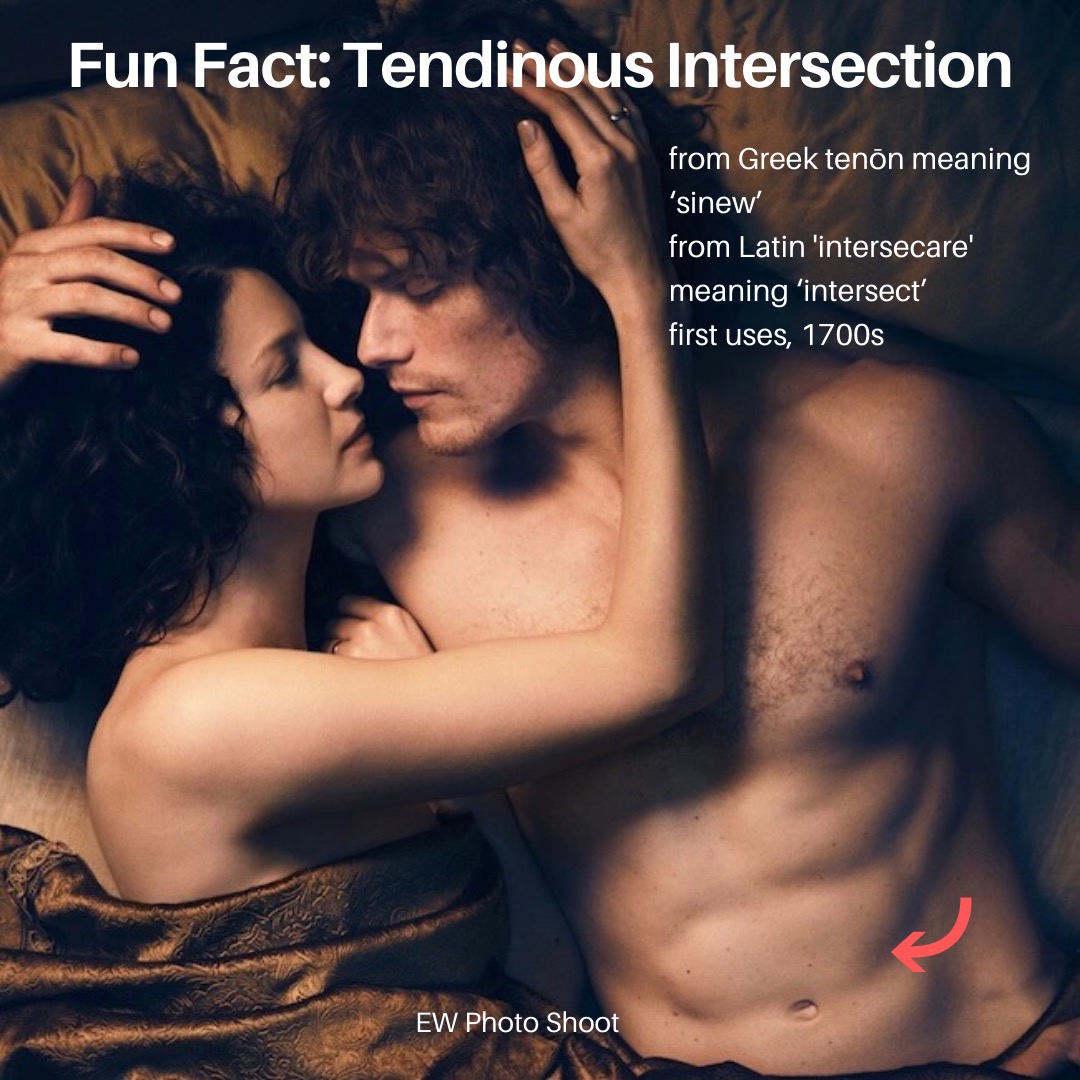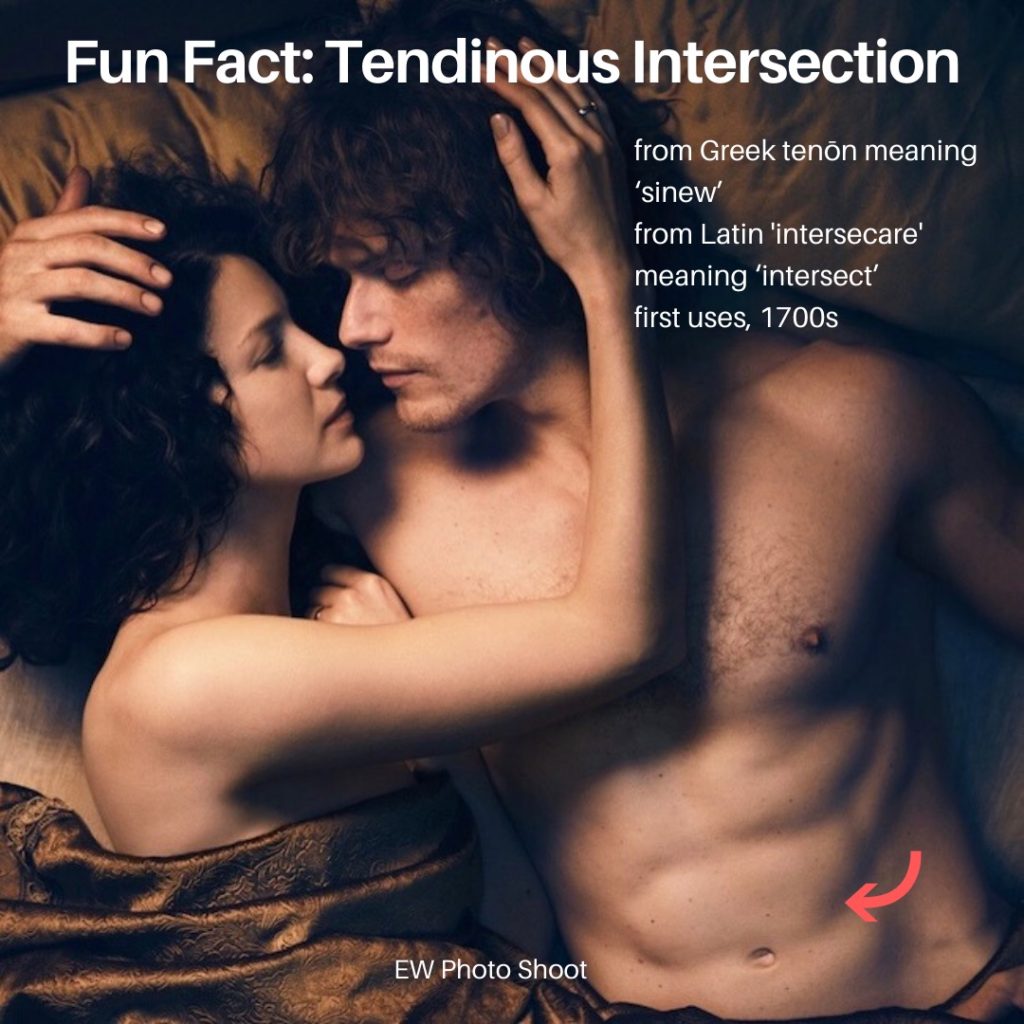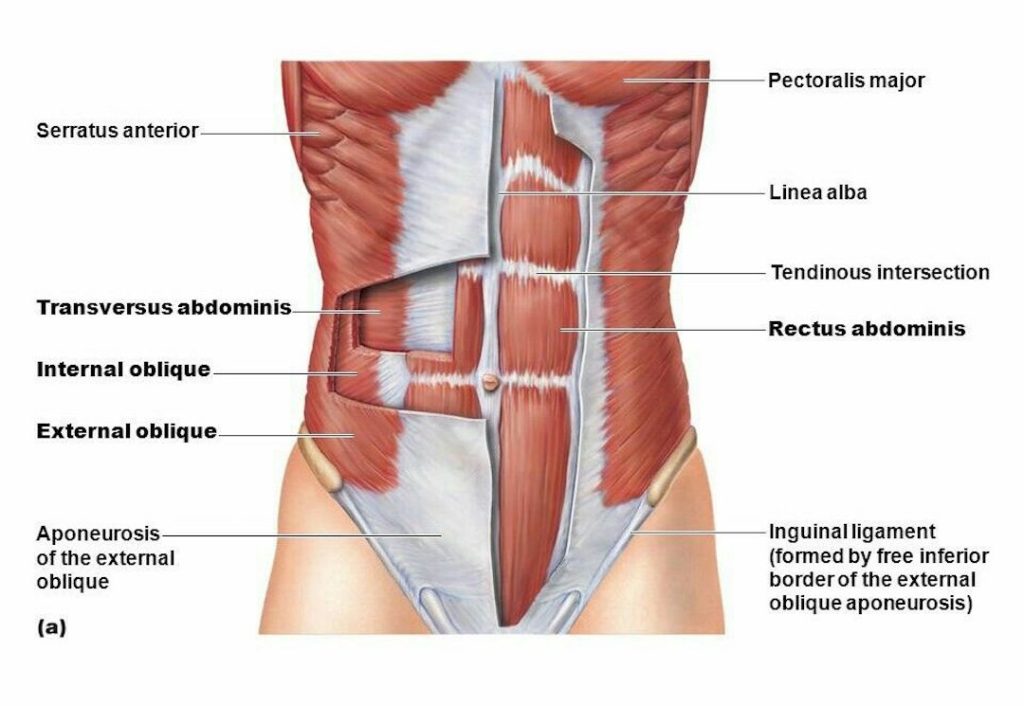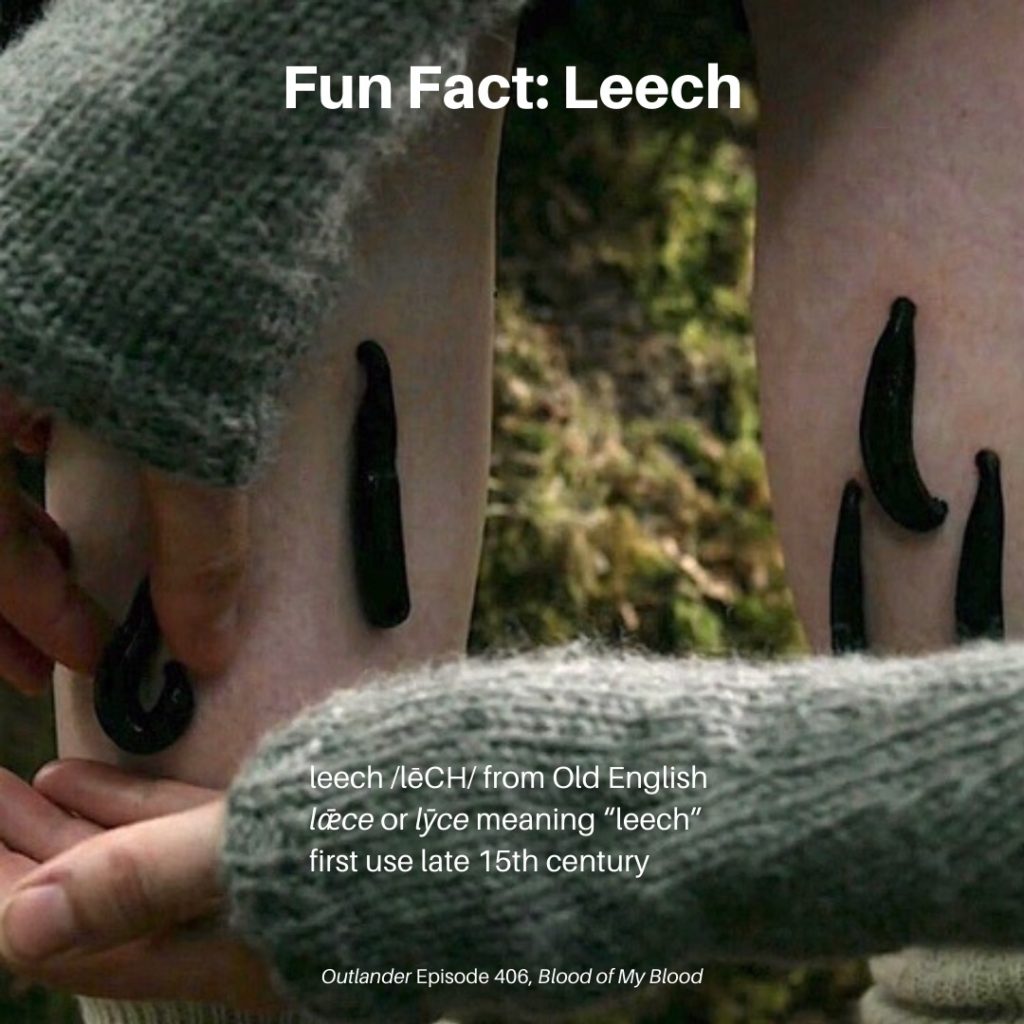
Anatomy Def: The leech is a segmented parasitic worm, closely related to the earthworm. Leech also means a doctor or healer. Who knew? 😜
Outlander Def: “Get-them-off!” William Ransom, eighth Earl of Ellesmere, demands Claire free his limbs of the ghastly creatures!
Learn about blood, the sumptuous repast of leeches, in Anatomy Lesson #37, “Outlander Owies Part 3 – Mars and Scars.”
Ahhhh, now you may think leeches boring, if so, I think you could be wrong. Here are fascinating fun facts about leeches:
-
-
- More than 700 species
- Soft, muscular bodies that lengthen and shorten during movement
- Most have front and back suckers
- Three sharp blades to cut flesh sit under front sucker
- Saliva contains hirudin, anticoagulant peptide (short amino acid chain)
- Used in bloodletting for at least 2,500 yrs
- Hemaphrodite – each has one female organ and 9 pairs of testes. 😳
- Appear in Proverbs 30:15 as an archetype of insatiable greed!
-
Bloodletting via leech is a time-honored practice dating to ancient Greece and India. Throughout Europe, the medicinal leech, Hirudo medicinalis, was used on ailing patients to rebalance body humors.
Yet more reasons this episode was titled “Blood of My Blood!!!” 😱
In 18th and 19th century Britain, leech-gatherers travelled the marshes gathering leeches from the wild. The practice became so widespread, the population was decimated in many areas. Bloody little buggers! 😈
In Old English, lǣce, was not only the name of the animal but also referred to a physician, and lǣcecraft or leechcraft described the art of healing. Hum….
Beginning in about 1980, leeches enjoyed a resurgence in modern medicine. Today, many hospitals stock them to treat:
-
-
- Joint disease such as epicondylitis and osteoarthritis
- Vein diseases of the extremities
- Microsurgery
- Blood-clotting disorders using hirudin
-
WARNING! If you sport a strong wame, watch this PBS video of how a leech attaches, how it feeds and its use in modern medicine. Watch at your own discretion. There will be blood!!! 😷
Important! A leech can be removed by breaking the seal of front and back suckers with a fingernail or other flat, blunt object, flicking the leech away. Irritating the leech with a cigarette, vinegar, salt or soap may cause it to regurgitate stomach contents into the wound and transmit pathogens to its victim. Not common, but it has been reported.
Read about leeches in The Drums of Autumn as Lord John Grey and his “son,” William Ransom, arrive unannounced at Fraser’s Ridge. Make no mistake, Claire recognizes Jamie’s get! 😉
Blundering out of the stream, I shoved my way through the tangled branches, and burst through into the clear space beyond. A boy was dancing on the bank above me, slapping madly at his legs and howling as he hopped and fro.
“What—?” I began, and he glanced up at me, blue eyes wide with startlement at my sudden appearance.
…“Leeches,” I said, professional calm descending by habit over personal tumult. It couldn’t be, I was telling myself, at the same time that I knew it damn well was. “It’s only leeches. They won’t hurt you.”
“I know what they are!” he said. “Get them off me!” He swatted at his calf, shuddering with dislike. “They’re vile!”
“Oh, not so terribly vile,” I said, beginning to get a grip on myself. “They have their uses.”
“I don’t care what use they are!” he bellowed, stamping in frustration. “I hate them, get them off me!”
“Well, stop whacking at them,” I said sharply. “Sit you down and I’ll take care of it.”
He hesitated, glaring at me suspiciously, but reluctantly sat down on a rock, thrusting his leech-spattered legs out in front of him.
“Get them off now!” he demanded.
See leeches feasting on Willie’s blood in Outlander episode 406, Blood of My Blood. 🚫 Leeches for this Lord!
The deeply grateful,
Outlander Anatomist
Follow me on:
- Twitter @OutLandAnatomy
- Join my Facebook Group: OutlandishAnatomyLessons
- Instagram: @outlanderanatomy
- Tumblr: @outlanderanatomy
- Youtube: Outlander Anatomy
Photo and Video Credits: Sony/Starz, PBS

